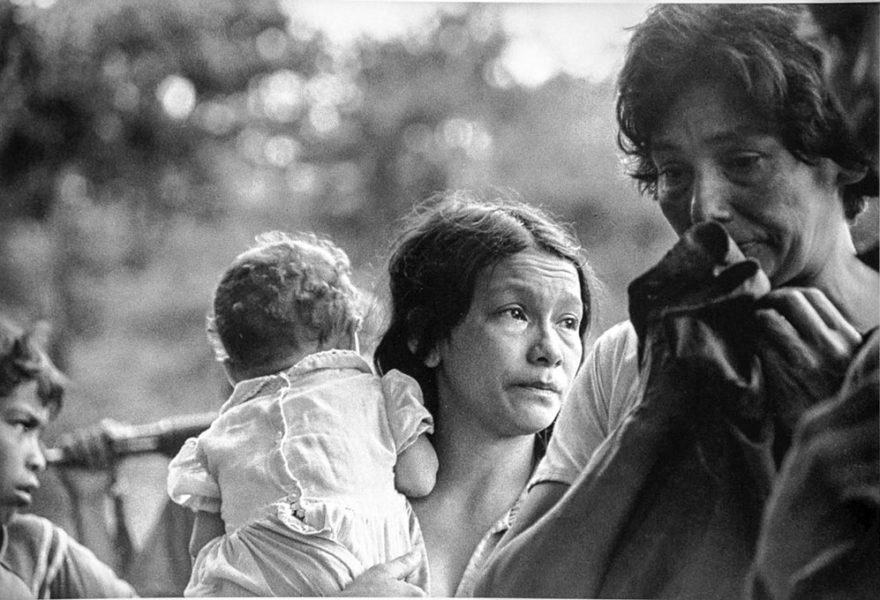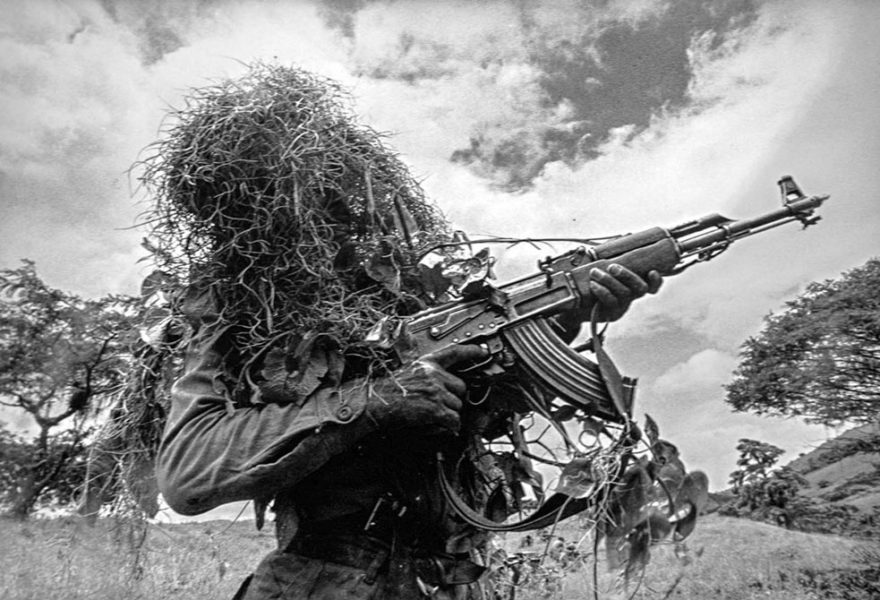Nicaragua.Sandinista Revolution, 1983 – 1986
In 1980 he made his first trip to Nicaragua by the invitation of the Ministry of Culture of the Sandinista government to photograph the first anniversary of the revolution. He traveled to the Pacific coast and the Atlantic area where he met with representatives of the misurasata (Miskito, Sumo, Rama, and Sandinistas United) organization.
In 1983 he traveled again to Nicaragua and stayed to document the daily life in the war zone. The image of a peasant killed in Planes de Vilan is from that year and portrays the first act of war of the contra (short for contrarrevolution [counter-revolution], paramilitary group that opposed the Sandinista government). The image also attests to the application of the us guerilla warefare techniques published in the article “How to kill a communist” in the Soldiers of Fortunes magazine (May-June of 1983).
Throughout his stay in Nicaragua he received funding from the editorial Casa de las Imágenes, directed by Martha and Ricardo Zarak.
The process
“The violence in which the labor and agrarian struggles were interrupted in the 1950s (in Honduras, Guatemala, and El Salvador) and the ideological repression from that time contributed to the emergence of the guerrilla movements in the region since 1960 (especially in Guatemala, Nicaragua, and El Salvador). The first movements soon experienced fatal defeats and many insurgents fled abroad, mainly to Mexico, where they contacted political exiles, mainly communists. Similar to the first decades of the twentieth century, these exiles and the displacement of political activists (and sometimes, increasingly large populations uprooted by civil wars) created regional networks that reinforced the efforts of each specific group, not only for logistical support or material, but also to enrich them with their experiences W. (Molden, 2015, 72)
The ‘contras’
“Reagan came into office just after a revolution had taken place in Nicaragua, in which a popular Sandinista movement (named after the 1920s revolutionary hero Augusto Sandino) overthrew the corrupt Somoza dynasty (long supported by the United States). The Sandinistas, a coalition of Marxists, left-wing priests, and assorted nationalists, set about to give more land to the peasants and to spread education and health care among the poor. The Reagan administration, seeing in this a ‘Communist’ threat, but even more important, a challenge to the long u.s. control over governments in Central America, began immediately to work to overthrow the Sandinista government. It waged a secret war by having the cia organize a counterrevolutionary force (the ‘contras’), many of whose leaders were former leaders of the hated National Guard under Somoza. The contras seemed to have no popular support inside Nicaragua and so were based next door in Honduras, a very poor country dominated by the United States. From Honduras they moved across the border, raiding farms and villages, killing men, women and children, committing atrocities”. (Zinn, 2008, 433)
“In the mid-1981 the United States began its strategy to promote a counter-insurgent force in Nicaragua led by former members of Somoza’s National Guard. Initially the contras should provide the United States with means of pressure to force Managua to stop its weapon shipments to Salvadoran rebels. By 1983 the contras war had acquired a dynamic of its own. The original aim of pressuring the Sandinistas from exporting their revolution was forgotten, it was already a war of harassment and wear. Contras in this field have had considerable success”. (Sohr, 1989, 24)
“According to Newsweek in its edition of November 8, 1981, ‘the operation [contra] has another objective [in addition to interrupt the supply of arms to El Salvador]: to destabilize and undermine the government of Nicaragua supported by Cuba’”. (Neuberger and Opperskalski, 1983, 147)



